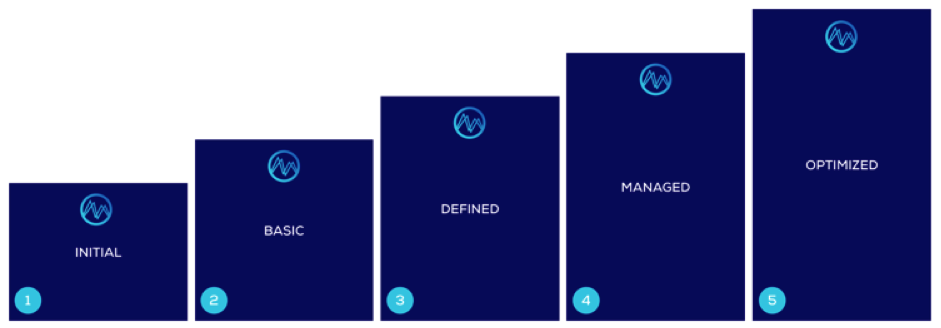
Initial
At this first level - ‘‘initial’ - Alarm Management is in place but is unstructured. Operators are often overloaded with alarms and, as a result, do not rely on the actual alarms. Many alarms have their default settings and are not tuned to the actual situation. There is a basic understanding of the performance of the alarm management system but no structural measurement is done. There are no common standards on alarming nor any policy that focuses on improving the alarm load. Organizations in this level might want to improve but the main challenge is where to start.
Basic
Organizations in ‘basic’ level have an alarm system in place that is useable in normal operation. Alarm settings are done in a consistent manner, possibly with some minimal customization. Operators in this level often react on the rate of alarms rather than the details of the alarms. Alarm performance is measured, including identification of bad actors but this might involve significant manual input. There is some use of manuals, or an alarm journal, however not complete and up-to-date. Goals and objectives on alarm management are defined, either on paper or in the standard way of working, but not yet according to industry standards.
Defined
The alarm management system is reliable during normal operation, however less reliable in upset state. All alarms are meaningful and have a defined response, operators react consistently and fast to all critical alarms. Alarm settings are appropriate for normal operation including basic dynamic suppression of individual alarms (delay, hysteresis, dead band). Alarm prioritization is used according to standards. Alarm management performance is measured and analyzed on a regular basis as part of a continuous improvement program to resolve any new bad actor alarms. There is a comprehensive approach for managing change based on the site specific alarm philosophy.
Managed
Alarm system is reliable during steady and upset state. Operators have high confidence in alarm system, and have time to read, understand and react on all alarms. Operators have sufficient time for process improvement. A large proportion of the alarms is treated dynamically so they can be annunciated to the operator only when they have a response that is appropriate for the current operation mode. Some use of model-based alarming for multivariate relationships. Alarm management is discussed at management level with performance metrics closely aligned to the organization’s strategy. Long term trends are measured and analyzed at least bi-yearly. Changes to alarm configurations are documented and continuously monitored. Alarm management is part of the company policy and is adapted and adopted in all layers of the company. A professional alarm philosophy is in place on company or line of business level.
Optimized
Alarms are used as early warning to prevent the process to get into upset state. Operators pro-actively steer the process to avoid alarms. Intelligent alarming is in place to alert deviations from multivariate relationships. Monitoring of deviations from optimal process steering are based on statistical analysis of past performance. The alarm system is considered to be a critical part to optimize process control, there is a strong focus on continuous improvement. Alarm management has become a strategic tool for management, and it is a central part of the organization’s control and management system.
Alarm Management Quick Scan
TrendMiner developed a quick scan based on the Alarm Management Maturity Model. The quick scan allows you to benchmark your Alarm Management processes to international standards such as EEMUA and ISA18.2. By answering the 17 multiple choice questions (max 10 minutes), your alarm management maturity is determined focusing on four different areas: operation, technology, processes and policy. It also gives insight into the next steps to take in order to grow towards the next, more mature level.


